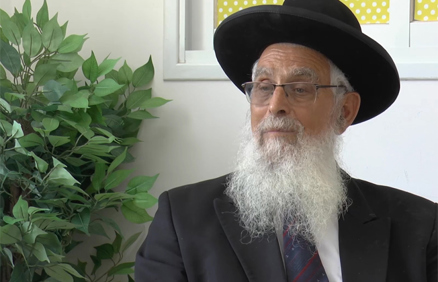Tanach for our generation

When are independent, original interpretations of Tanach appropriate and when do they cross the lines into what Rabbi Yaakov Ariel terms "modern Karaism"? A translated excerpt from Ye'erav Sichi, a book-length interview with Rabbi Ya'akov Ariel.
Tanach is our book of books.[1] It is the source of our faith, personal and communal practices, and the great halachic system of the Oral Torah. Tanach is the focus of public Torah study: we read the Torah in synagogue, conclude with the haftarah from the Prophets, and pray primarily from the prayers of King David contained in Psalms. When I served as the head of Yeshivat Yamit in Neve Dekalim, I taught an ongoing Thursday night class on Tanach.[2]
It is good that people learn Tanach. The in-depth approach is important, through which people draw out biblical worldviews based on the text and commentaries. However, I offer a specific criticism: I sometimes see a deviation from the Torah path, a phenomenon that I call a form of modern Karaism. Some independently interpret Tanach without basing themselves on the Sages and even attempt to undermine their authority.
In principle, we are allowed to study Tanach simply, with the peshat approach, based on our independent and even innovative understanding. The Sages did not oppose this. Our great commentators interpreted in this fashion. They did not explain the text based only on the Sages, because the Sages themselves did not obligate us to accept only their interpretations — except regarding practical halacha and fundamentals of faith. When we discuss practical halacha, the Sages alone have the correct interpretation. The same is true regarding ideas: if someone proposes ideas that contradict the fundamentals of faith, he is not engaging in Tanach study. Someone can suggest new interpretations of Tanach in the peshat approach, even if this interpretation is not written in existing commentaries, on the condition that it conforms with the spirit of Tanach and of the great commentators who served as the Sages' successors. Unfortunately, sometimes people mistakenly see themselves as capable of interpreting Tanach on their own extracting ideas that contradict the spirit of Tanach and the spirit of the Sages.
For example, the Sages and commentaries explain Amos (9:11), “On that day I will raise up the fallen booth (sukkah) of David that is fallen,” as referring to the period after the kingdom of Judah was destroyed. While the Sages and the Rishonim interpret this verse as relating to the future redemption, based on the context it is also possible to explain this verse as referring to the kingdom of Judah during the days of Hezekiah.[3] While no other commentators raise this possibility, this interpretation is a completely legitimate . The interpretation does not contradict the Sages’ approach, since prophecies are given both for the prophet’s generation and later generations. Isaiah’s prophecies about the mashiach refer also to Hezekiah, who had the potential to be mashiach if he and his generation had been worthy. The above explanation of Amos can be correct as long as you believe fully in the future redemption in which the Davidic monarchy will be reinstated, like the sukkah that fell and will be rebuilt from the same materials.
Another example is the vision of the valley of dry bones (Ezekiel 37). According to the Sages, this prophecy refers either to the members of the tribe of Ephraim who left Egypt too early or to the future resurrection of the dead.[4] Following the establishment of the State of Israel, contemporary commentators lean toward interpreting the prophecy as referring to the resurrection of the Jewish People and its return to the Land of Israel. This is particularly poignant after the Holocaust and the long exile that eroded our dry bones, which were scattered across the globe. This interpretation does not contradict the resurrection of the dead. Quite the opposite — the miraculous resurrection of the nation in our day only strengthens the belief in resurrection of the dead. The Gemara[5] offers practical examples or analogies to explain resurrection of the dead, such as snails awakening after rain and dry wheat that is planted and grows. Similarly, we can offer the greatest of all analogies to resurrection, which is the revival of the Jewish nation — a unique historical occurrence. A nation that was dispersed 2,700 years ago, beginning with the exile of the Ten Tribes; was scattered and divided among the nations; experienced pogroms, forced conversions, the Holocaust and other terrible suffering — returns to its land with renewed independence. It reestablishes its army, restores its language, and reinvigorates its Torah study that had reached a low point. How did this happen? Someone who does not believe in the resurrection of the dead will be incapable of understanding this phenomenon, while someone who sees it must believe in the resurrection of the dead. Therefore, the new interpretation does not contradict the Sages’ approach but rather strengthens it.
We are permitted and we should interpret Tanach. We should study Torah in depth, which invariably leads to new interpretations. Tanach was given to the ages; every prophecy that was written was intended for the generations. Each generation may interpret Tanach based on its own understanding, but on one condition: An interpreter may not force Tanach to fit into his personal world view. The interpreter must rise above his personal circumstances and interpret the problems of his generation based on Tanach, and thus raise his generation. Tanach is here to teach us, not for us to teach it. An interpreter’s circumstances only allow him to see things from a new perspective, through which to understand the biblical text.
The realia of the ancient world, such as geography, history, and archeology, can shed new light on a verse. For example, the book of Samuel (1 13:21) says, “And the price of the filing was a pim for the mattocks.” Commentaries do not know what “pim” means and offer a variety of interpretations. I heard from Prof. Yehuda Elitzur that scholars found a small weight with the word “pim” written on it. If so, we now know that that “pim” was the coin’s weight (indicating its price). Someone who took his mattock to the Philistines for sharpening paid that high price because, at that time, there were no smiths in Israel.[6] Is there anything wrong with learning the meaning of the word “pim”?
Contemporary scholars identify many places mentioned in Tanach. However, we have to be careful that their hypotheses do not contradict the text. Some scholars contended that the city of Ai was not destroyed in Joshua's time since they identified a different place as Ai, which was destroyed at an earlier period. They were mistaken. While there is room for honest, objective scholarship, we need to remember that these are imprecise sciences that are built on speculation. We cannot dismiss the biblical text because of a questionable speculation. Tanach will always be correct. If there is a contradiction between Tanach and a theory, the theory must be wrong. However, a reasonable theory that coheres with Tanach and sheds new light on a verse is absolutely worth saying. Therefore, it is good that people today are involved in the archeological and historical aspects of Tanach; this revives the sacred text. But only on the condition that they know that Tanach is true.
We have to remember that, for us, Tanach is not archeology but ideology. Archeology helps us understand the context of the events described in Tanach. However, we cannot limit the prophecies to that historical setting. Everything contained in Tanach is intended for all generations. The main point is finding Tanach’s message for us today. The intent is not to reduce Tanach to contemporary concerns, rather to view our reality through the lens of Tanach. Based on Tanach studied in the spirit of the Sages, we can answer questions that arise — questions of faith, morality, values, culture, and society. This engagement should be our primary focus when studying Tanach.
[1] This article is adapted from the book-length interview by R. Aral'e Harel, published as Ye’erav Sichi: Sichot im HaRav Yaakov Ariel al Hashkafah, Avodat Hashem u-Pirkei Chaim (Dabri Shir, 2018). It is translated by R. Gil Student and published here with permission.
[2] Based on kabbalistic sources, it is best to study Tanach during the day and not at night. However, I taught the Early Prophets in depth from a halachic perspective, as explained in the Oral Torah, and therefore did not see a problem in learning Tanach in this way at night. Additionally, the recommendation against studying Tanach at night is not directed at everyone. If someone is unable to learn during the day, or the yeshiva insists that students devote all hours of the day to Talmud except for a single weekly class at night, this is not a problem.
[3] Example suggested by R. Aral'e Harel, the interviewer.
[4] Sanhedrin 92b
[5] Ibid. 91a
[6] See Da’at Mikra, ad loc.




